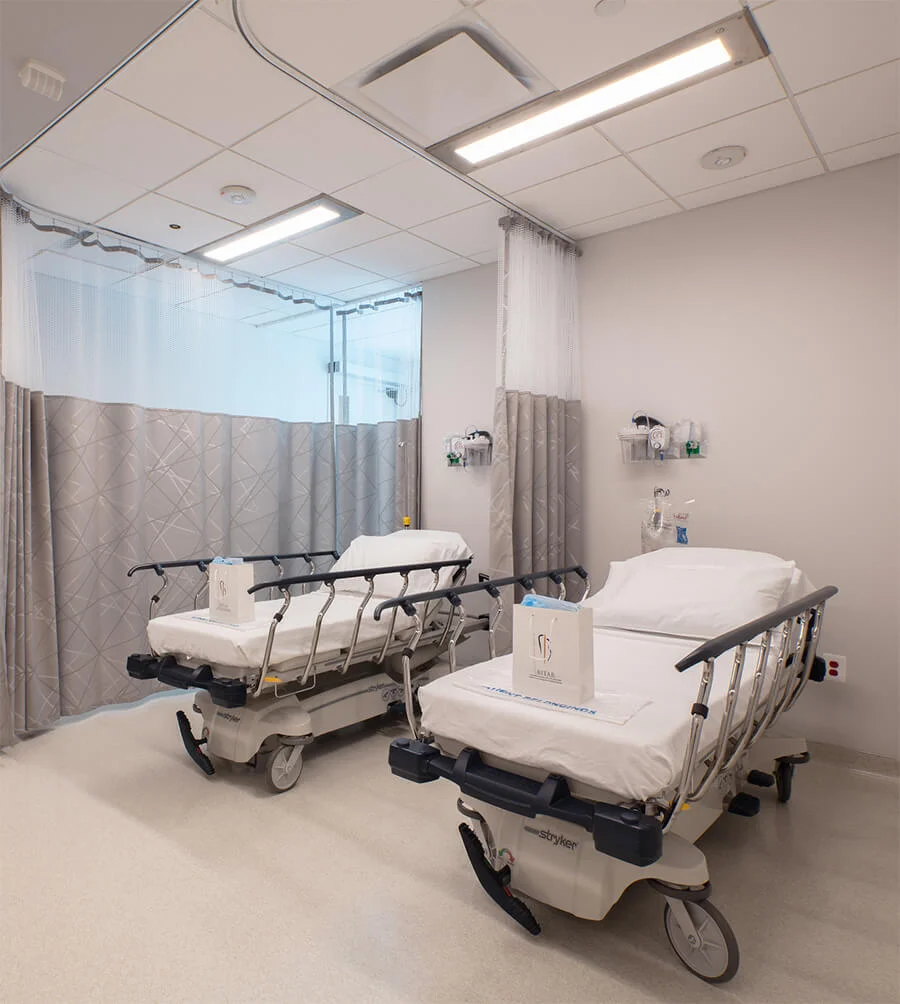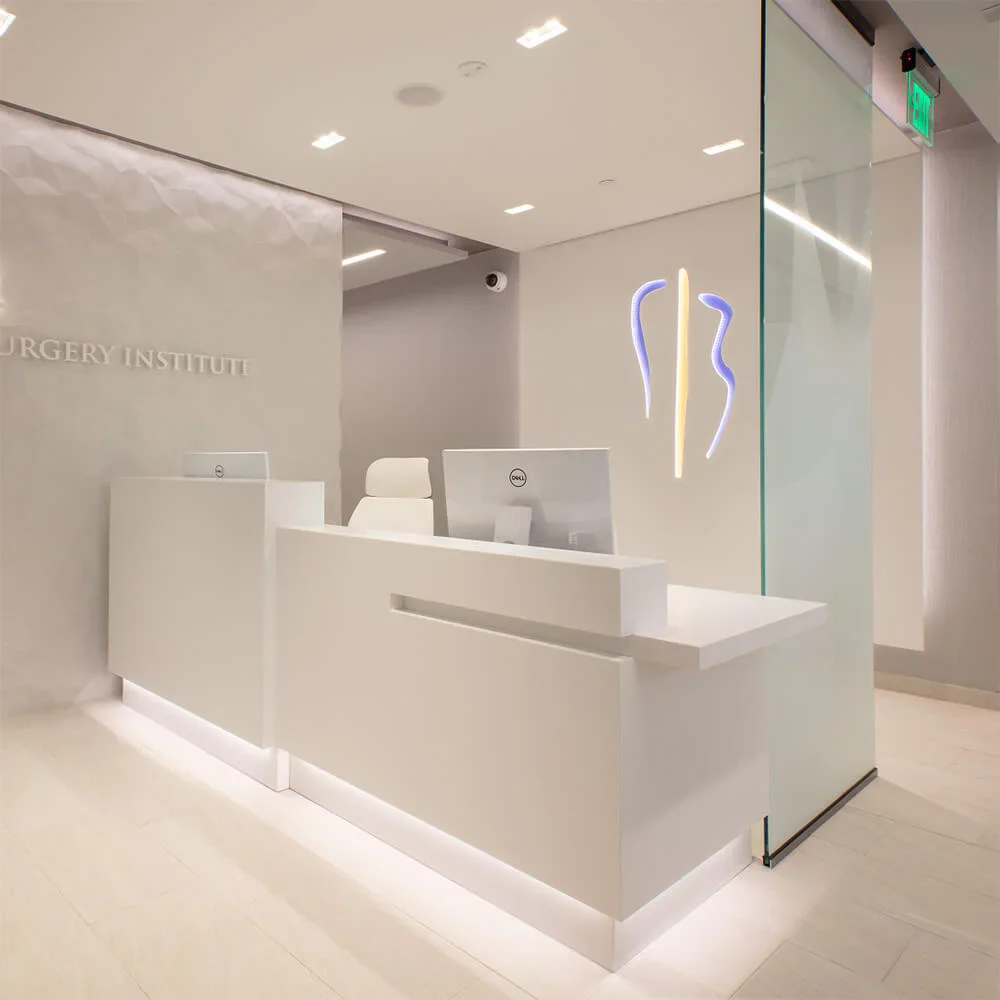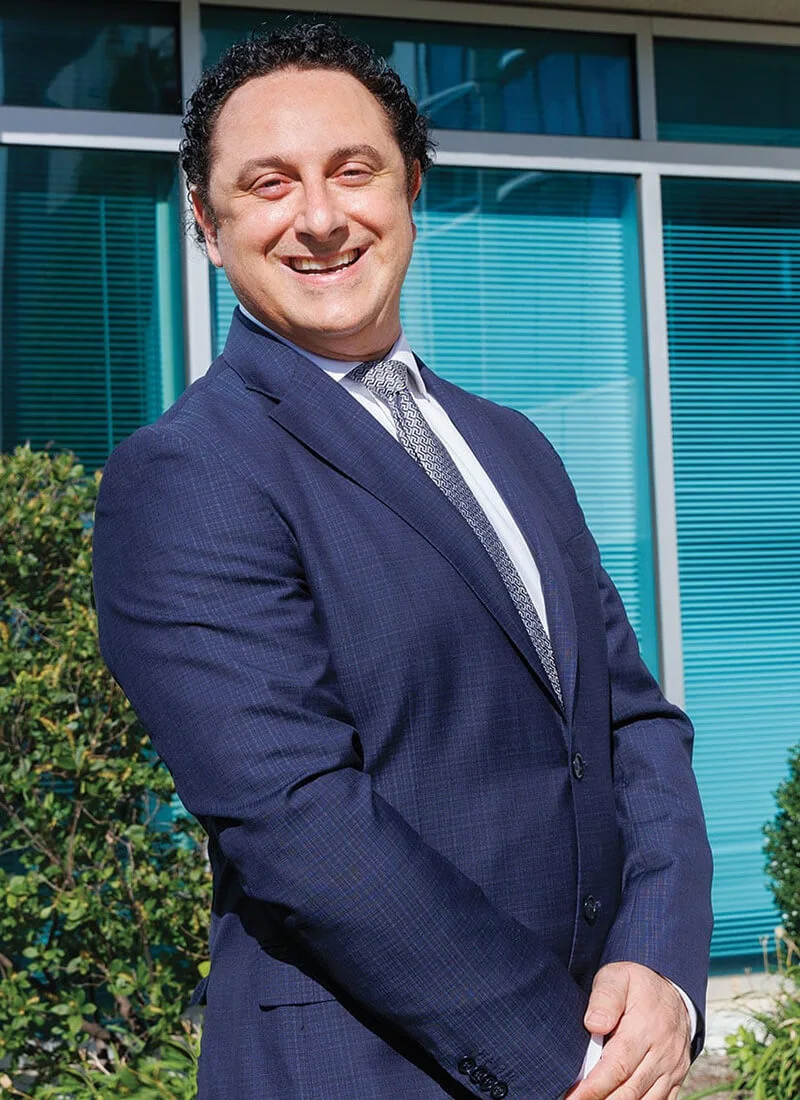An open forehead lift, when performed well by an experienced plastic surgeon, can rejuvenate the upper third of the face and can be combined with a facelift to achieve comprehensive facial rejuvenation. A forehead lift accomplishes two main goals: lifting the eyebrows to “open up the eyes” and weakening the muscles of the forehead and between the eyes to smooth out the wrinkles. Dr. Bitar treats patients globally and locally from Northern Virginia, including Fairfax, Vienna, Alexandria, Washington D.C., and Maryland, from his boutique practice in Fairfax, VA.
Pain Level After Surgery
Moderate
Anesthesia
General
Duration of Surgery
1.5-2 Hours
Scars
Hidden incision in the scalp
Final Results
6-12 Months
Return to Regular Work
3-4 Weeks
Resume Exercise
4 Weeks
Price Range
$7,800 & up

A brow lift is a surgical procedure that repositions the skin and underlying tissues of the forehead and eyebrows to restore a more lifted and refreshed appearance. Over time, the effects of aging, gravity, and repeated facial expressions can cause the brow to droop and horizontal lines to deepen, making the face appear tired, angry, or older than it truly is. A brow lift targets these concerns by smoothing creases, reducing frown lines, and elevating the brow line to open up the eye area. At our Fairfax practice, Dr. Bitar offers a range of techniques—from minimally invasive endoscopic lifts to more targeted procedures—tailored to your anatomy, goals, and preferences. The result is a softer, more alert expression that subtly enhances your facial harmony.
Patients often report looking more rested, friendly, and confident following the procedure. Key benefits include:
When someone looks in the mirror and is unhappy with their face, it can sometimes be difficult to verbalize why they are unhappy. Assuming that genetics and the aging process play a role in a person’s unhappiness with their appearance, it is important to identify the problem and offer a surgical solution:
An initial consultation is scheduled, where we will discuss the forehead lift procedure and determine whether you are a suitable candidate for the surgery. Your medical history will be reviewed, and you will be asked to see your medical doctor for a physical check-up and a few laboratory tests to ensure you can undergo the surgery safely. You are asked to stop medications that cause bleeding, such as aspirin or aspirin-like products (Motrin or Ibuprofen), a week before this procedure. You are asked to stop smoking two weeks before and two weeks after surgery, for the surgery to be performed safely, and for you to have optimal results. You are given the opportunity to speak with patients who have undergone the same surgery you are considering. We will see you shortly after the surgery (in a day or two, usually). You are seen regularly after your surgery. You are always welcome to return for a follow-up, even years after your surgery, at no additional charge.
Since Botox became popular a few years ago, the number of forehead lifts has declined nationwide, since people now have a non-surgical option. In this procedure, Botox is administered to the forehead muscles and between the eyes, coupled with an upper eyelid lift. Botox is excellent for smoothing the wrinkles of the forehead, between the eyes, and in the area of the crow’s feet at the corners of the eyes. The injection is relatively painless, quick, and provides temporary muscle relaxation, smoothing wrinkles for about 3-4 months. If the upper eyelids are heavy due to excess skin and/or fat, combining an eyelid lift with Botox injections may yield results comparable to those of a forehead lift, with less downtime and a simpler procedure. The disadvantage of this procedure is the fact that Botox has to be repeated about 3-4 times a year.
Minimally invasive procedures have increased in popularity as a result of their effectiveness and the ability to have them performed under local anesthesia with light sedation. Good results with less downtime are the primary reasons for this trend. This procedure is performed by making two small incisions behind the hairline and lifting the arched part of the brow to rejuvenate the upper face. Excess skin removal of the upper lids is often combined with this procedure to address the heaviness of the face and upper eyelids. It addresses the tired look that many patients often complain about. The only downside to this procedure is that the results of the correction are more subtle, and if you have frown lines between the eyes, Botox or Dysport may still be required.
This is a forehead lift that is accomplished with three small incisions in the hair-bearing area of the forehead. The skin is pulled upwards and then secured in its new location with sutures or staples. This is our preferred method for a forehead lift.

Our team will provide a comprehensive post-operative plan to ensure the best possible outcome. The plan will outline what to expect postoperatively, including estimated recovery time, pain management, garments or dressings, and anticipated activity level. For your safety, we require that an adult stay with you at least the first 24 hours after surgery and drive you to your next-day follow-up visit. With most facial procedures, you will be instructed to limit activity for the first week or two, which could include restrictions on driving, prolonged travel, and flying. Additionally, we recommend that you refrain from exercise until cleared by your physician, typically around four weeks post-surgery. You are asked to refrain from smoking for a minimum of two weeks. To optimize healing, we recommend that you eat a high-protein diet. You should anticipate a variable degree of bruising and swelling, as with any surgical procedure; light make-up may be used to cover bruises starting a week after surgery. We also offer scar creams at an additional cost to optimize results.
To promote healing and minimize complications, you will be seen in a series of post-op appointments, including the day after surgery. These appointments will continue throughout the first year after the procedure to make sure you are healing as planned. For your added convenience, you also have direct access to Dr. Bitar’s cell phone number, should you need to reach him outside of office hours. The final post-operative visit, one year after surgery, is one of our favorites, as the results are fully apparent, and we love seeing our patients happy. You are always welcome to return and visit us, even years after your surgery.
At our practice, we’re proud to be one of the few in the area offering Elixir MD, a cutting-edge LED-based device specifically designed to accelerate healing after cosmetic surgery. Elixir MD stimulates cellular repair, reduces inflammation, and enhances circulation, dramatically shortening recovery time and improving surgical outcomes. This advanced technology sets our practice apart, offering patients a faster, more comfortable healing experience with visibly better results.

At the Bitar Cosmetic Surgery Institute, we take pride in providing our patients with the best possible surgical experience in the Washington, D.C. area, emphasizing patient safety while striving to optimize surgical results. This process includes comprehensive pre-operative preparation and patient education, the development of a personalized operative plan, and a thoughtful post-operative care regimen that emphasizes patient comfort and promotes recovery.
The Institute has adopted several strategies to further ensure patient safety. We are selective and only offer surgery to patients whose overall health and lifestyle choices allow for healing and facilitate recovery. To minimize risk, we require a comprehensive preoperative assessment that includes a thorough history and physical examination, as well as targeted laboratory tests.
All surgeries are performed in-house at our AAAASF-accredited surgical suite, representing the gold standard in patient safety and care. This certification ensures we meet the highest standards, with board-certified anesthesiologists and nurses on-site, adhering to strict protocols to minimize risks and optimize outcomes. Dr. Bitar is committed to continuing education, refining his skills, and introducing new techniques, all with the goal of enhancing safety and surgical outcomes.
We emphasize patient safety in our peri-operative care plan, advocating early mobilization, optimizing nutrition, and providing detailed care instructions. After surgery, patients are seen in our office frequently and early, starting the day after their procedure, and a staff member is available around the clock for any questions or concerns. Our entire team is dedicated to our patients’ well-being, and every measure is designed to minimize potential complications, promote a comfortable and rapid recovery, and optimize surgical outcomes.

Our commitment to excellence and exceptional patient care is in every step of your doctor-patient experience. Dr. George Bitar is a distinguished board-certified plastic surgeon who stays on the cutting edge of advancements in cosmetic surgery and technology to offer the best possible results. With a blend of artistry and meticulous surgical technique, he achieves beautiful and natural results for our patients. We provide a high level of patient safety, and our experienced and caring staff will be with you every step of the way. Our institute offers a wide range of surgical and non-surgical options, including skin care, injectables, and lasers, as well as in-office and hospital procedures, providing a versatile approach tailored to individual patient needs. Your aesthetic goals are our top priority, and each procedure is carefully customized to ensure you achieve the best possible outcome.
For more information, call our office at 703-206-0506.
The cost of a Brow Lift in Fairfax, VA and the greater Washington D.C. area starts at $7,800 and may increase depending on the surgical technique used, whether it is combined with other facial procedures, and the complexity of your case. This pricing includes the surgeon’s fee, anesthesia, facility costs, and comprehensive pre- and post-operative care. We understand that cosmetic surgery is an investment in yourself, which is why we offer personalized consultations and transparent pricing to help you plan with confidence. Because every face is unique, Dr. Bitar will provide a detailed quote during your consultation, tailored to your treatment plan and desired results. Our practice also offers financing options to make the journey toward a refreshed and youthful appearance more accessible.
If you would like further information about a brow lift in the greater Washington, D.C. area, please do not hesitate to contact our office to schedule an appointment by calling (703) 206-0506 or completing an online request form.

Never miss out on the latest offerings, transformations, and behind-the-scenes at Bitar Cosmetic Surgery Institute.
“Natural beauty but doing a little somethin’ somethin’ to make beautiful features pop is what the Model Lift™ accomplishes.”
–
Dr. George Bitar
Follow Us On Social Media